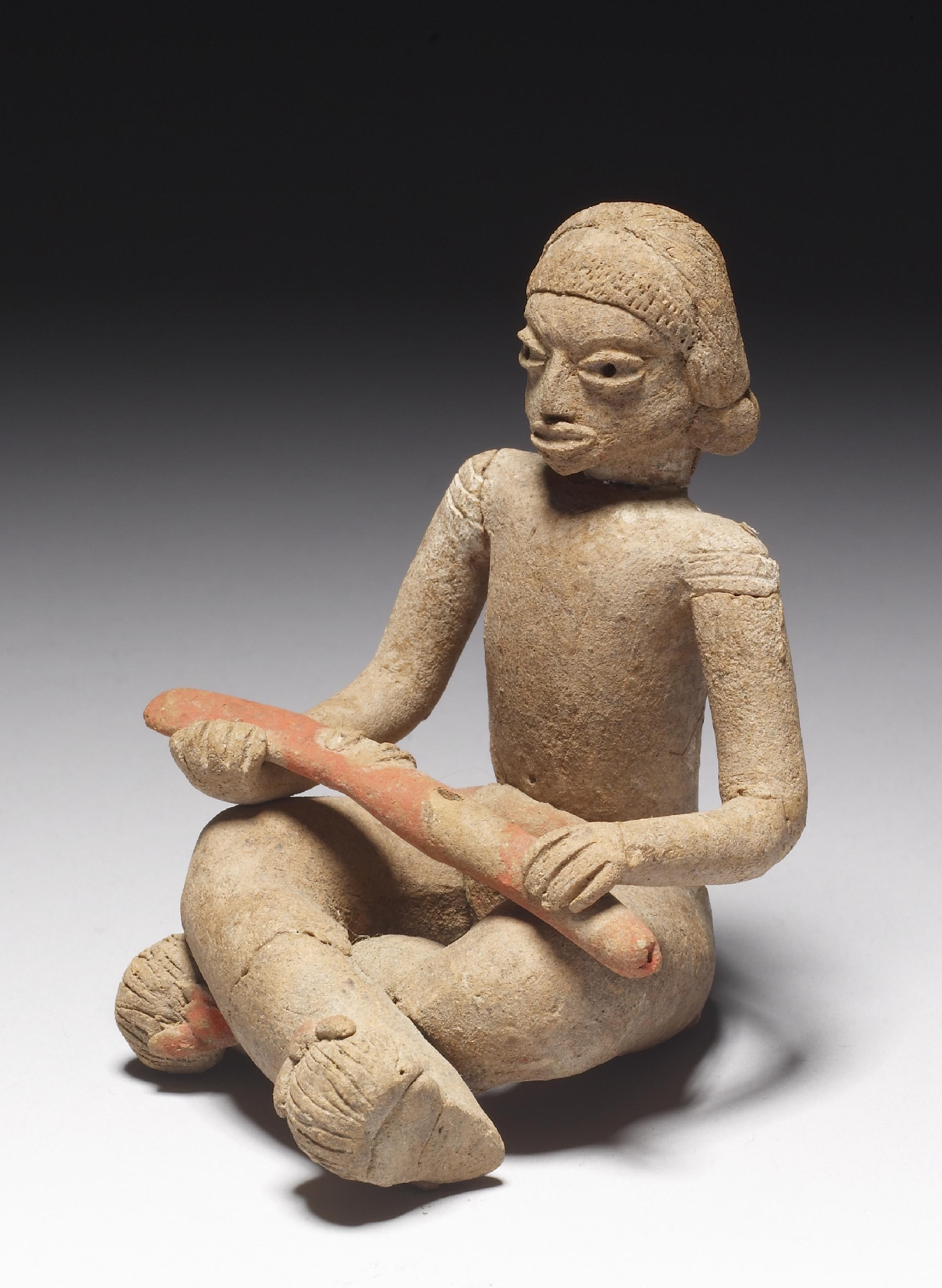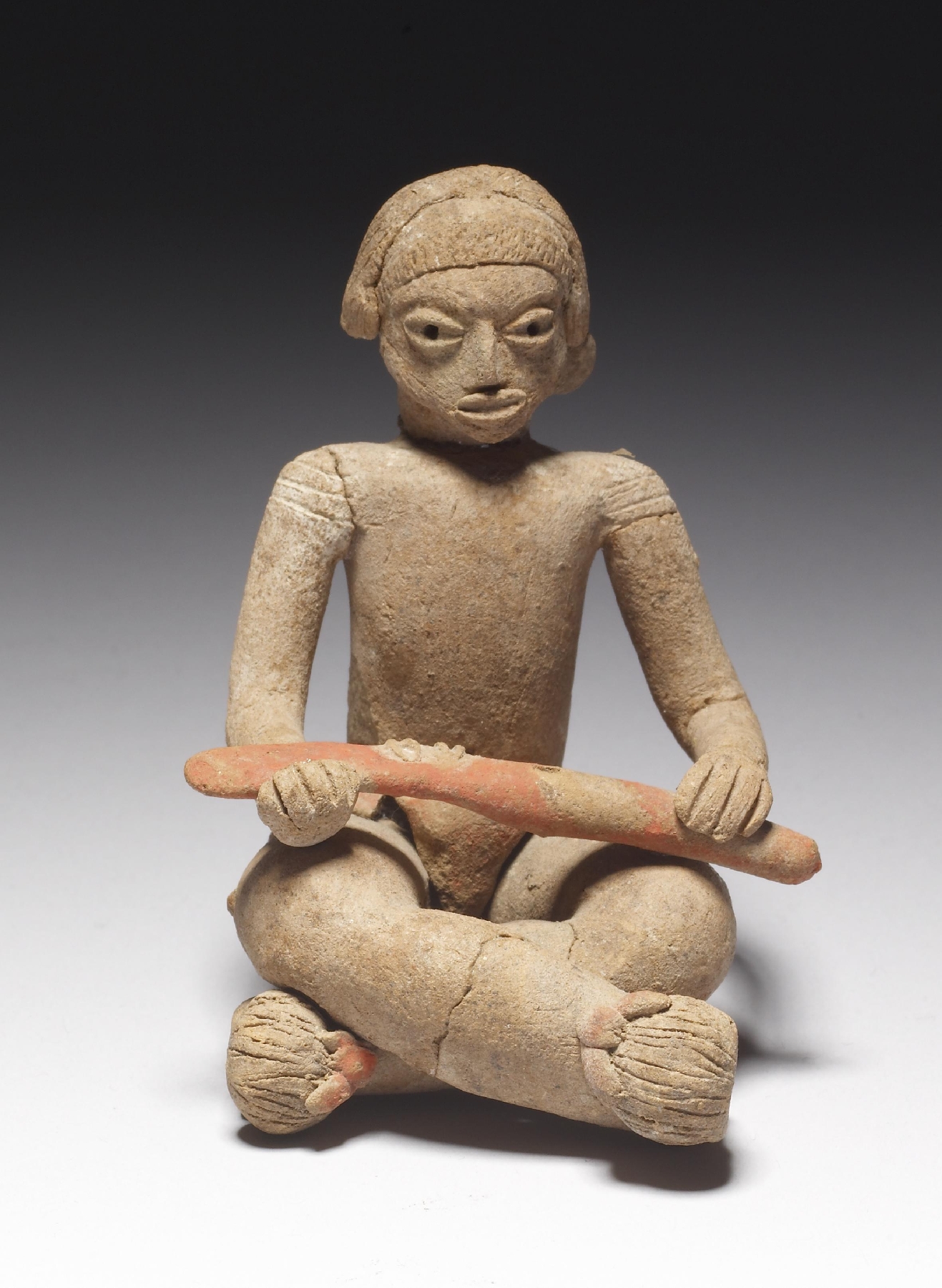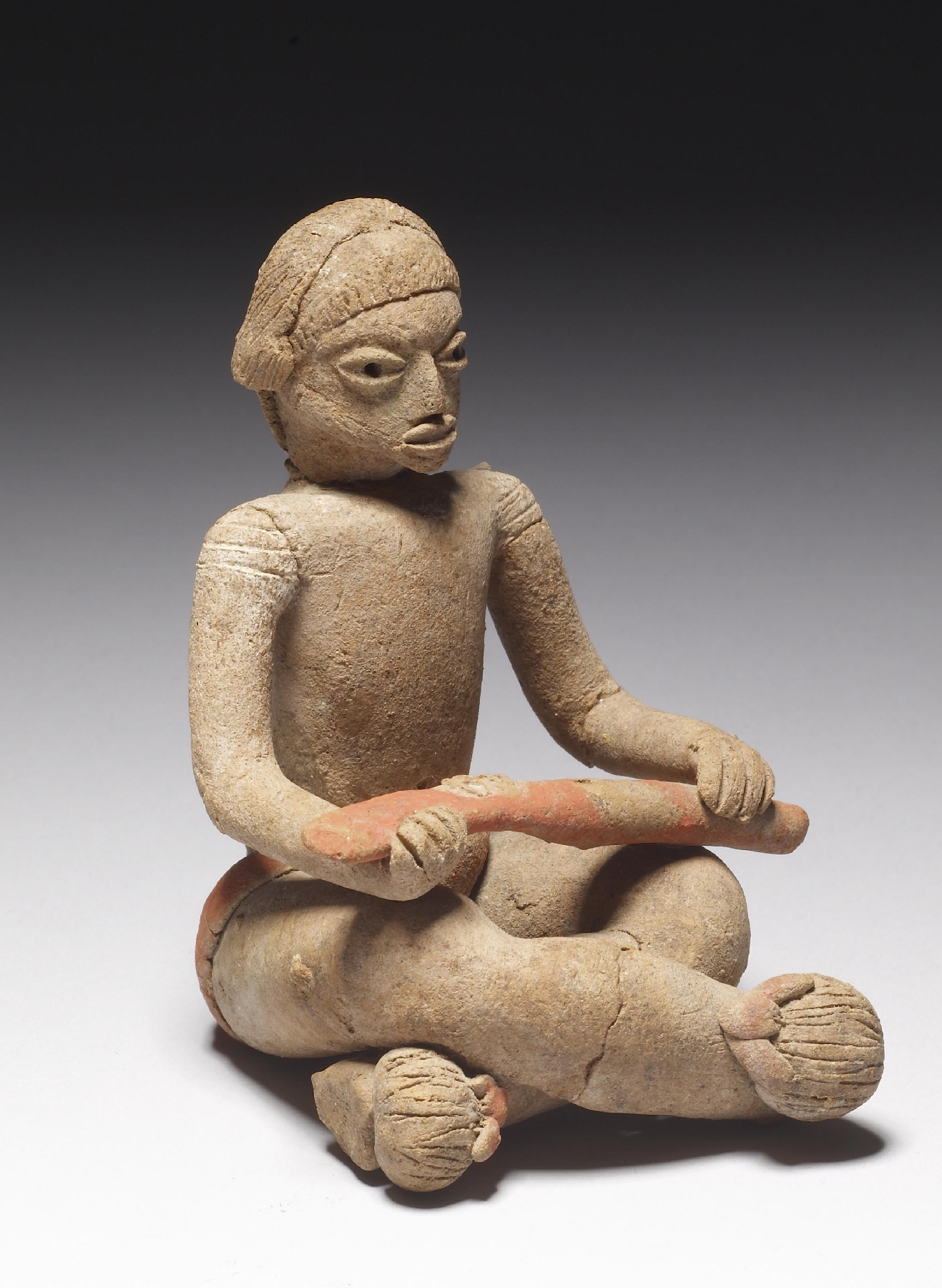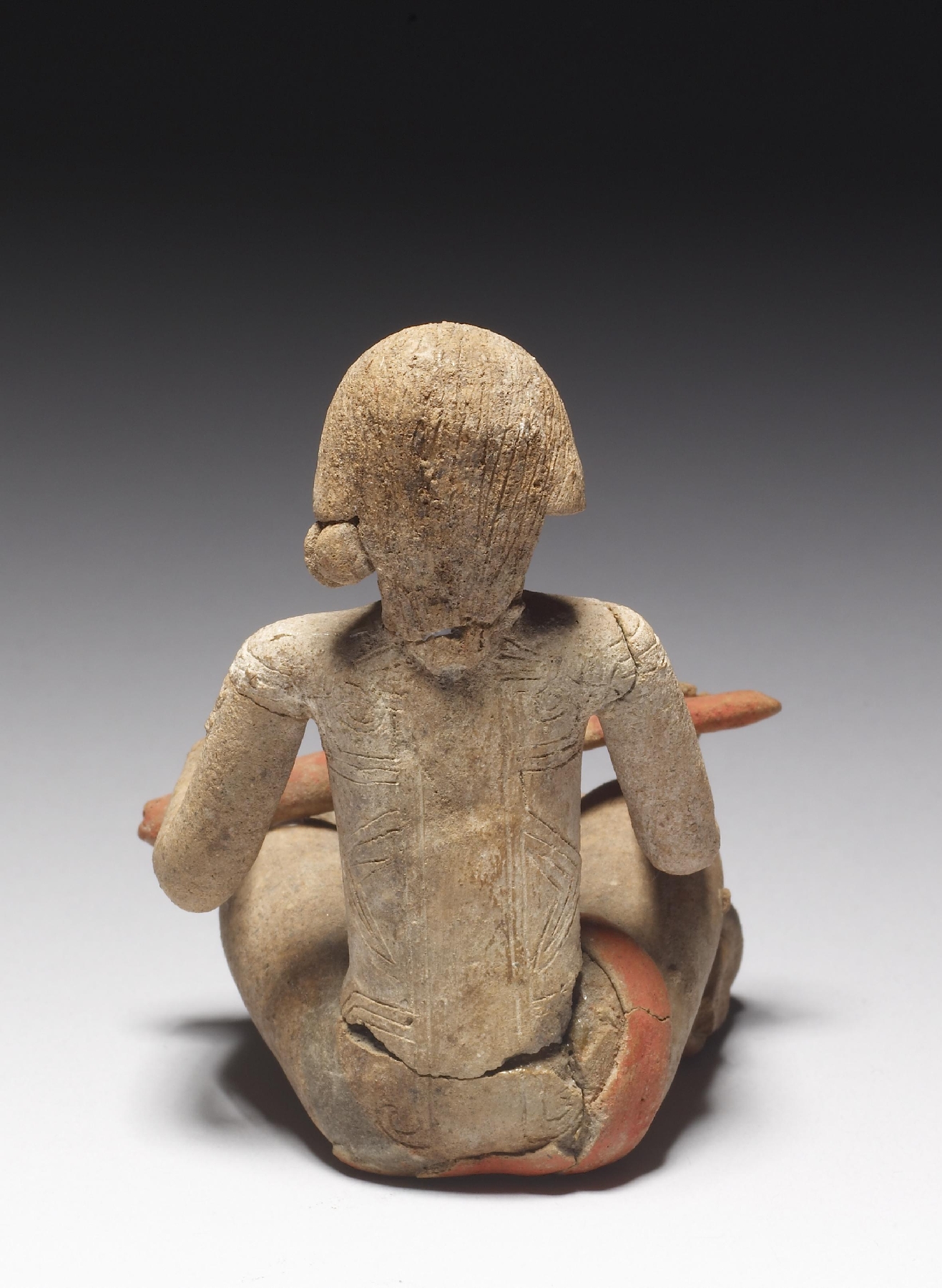Seated Male Figure
(Ancient Americas )
Solid, hand-modeled figurines of diminutive size yet remarkable detail and expressiveness represent the Xochipala style, a distinctive artistic tradition found in the highlands of Guerrero in western Mexico. The seated figure's lack of adornment and the marked figural naturalism are characteristic of early works from this period. The seated male figure holds a long bar, perhaps a scepter denoting political status. Large tufts adorn the tops of his feet, and his loins are wrapped in a red-painted cloth, the only surviving vestige of the region's textile arts. Slashes on the shoulders likely represent body paint, tattoos, or intentional scarring, a type of body adornment seen on many later ceramic figural sculptures from western Mexico.
Provenance
Provenance (from the French provenir, 'to come from/forth') is the chronology of the ownership, custody, or location of a historical object.
Throckmorton Fine Art, New York [date and mode of acquisition unknown]; John G. Bourne, August 31, 1998, by purchase; by bequest to Walters Art Museum, 2017.
Geographies
Mexico, Guerrero, Teopantecuanitlán area (Place of Origin)
Measurements
H: 3 1/8 x W: 2 5/16 x D: 2 11/16 in. (8 x 5.9 x 6.8 cm)
Credit Line
Bequest of John G. Bourne, 2017
Location in Museum
Not on view
Accession Number
In libraries, galleries, museums, and archives, an accession number is a unique identifier assigned to each object in the collection.
In libraries, galleries, museums, and archives, an accession number is a unique identifier assigned to each object in the collection.
2009.20.254








